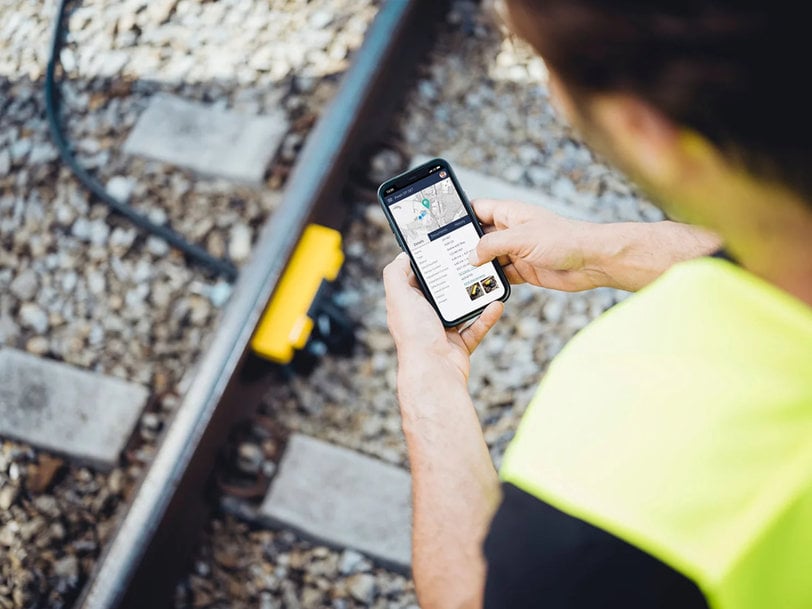railway-international.com
28
'23
Written on Modified on
Successful introduction of axle counting solutions in Poland
Frauscher Poland was established 25 years ago and since its inception, it has been a crucial market for Frausche.

Throughout all these years, axle counting systems together with wheel sensors have been utilised on public and freight railways, subways, industrial sidings and in urban transport across the entire country. The last system approved in Poland was the Frauscher Advanced Counter FAdC®. The certification of the FAdC® in 2019 has been an important milestone for Frauscher Poland and since then, our Polish colleagues have been involved in a number of important new railway projects across the country featuring this axle counting solution and its functionalities. To find out more about Frauscher’s presence in Poland and their most relevant projects, you can read the interview with Daniel Pytlik, the Managing Director of Frauscher Poland.
Since the introduction of the FAdC® to the Polish market, Frauscher has been involved in several projects in the country. What are some of the biggest projects since then?
Daniel: We obtained an indefinite certificate of approval for the Frauscher Advanced Counter FAdC® issued by the Polish Office of Rail Transport (UTK) in June 2019 on the basis of so-called cross acceptance. Nevertheless, with the aim of preserving strong ties with the largest administrator of the national rail network, PKP Polskie Linie Kolejowe S.A., we decided to additionally test the FAdC® system at a railway station managed by the PLK Company and I am glad to say the outcome was positive. Furthermore, we can already be proud of many other successfully completed projects, such as the application of the FAdC® system at the PKN ORLEN S.A. refinery in Płock, where more than 300 Frauscher wheel sensors have been installed in conjunction with the FAdC® for the purpose of track vacancy detection. Additionally, one of the manufacturers of railroad traffic control systems in Poland has already incorporated our axle counting solution into its level crossing systems, and in the year 2022 alone, we supplied FAdC® units for approximately twenty installations of this system throughout Poland.
In parallel, we are in constant contact with various signalling system integrators in the country and take an active part in the implementation of FAdC® into their newly developed systems. We are currently involved in development projects with three independent companies which will use the FAdC® system as the primary device for track and turnout unoccupancy control.
How can Polish railway operators and system integrators benefit the most from our reliable and cost-effective train detection systems and in particular the Frauscher Advanced Counter FAdC®?
Daniel: The systems we offer must meet the expectations of both, system integrators and railway operators. Unfortunately, the expectations of the two entities are somewhat different. From the operator's point of view, the system provided must be reliable, highly available, simple to use and easy to maintain. The system integrator, on the other hand, is primarily concerned with the price of the product and the simplicity of implementation in their own application. In other words, the solution has to satisfy a wide array of requirements at an affordable price. Frauscher wheel sensors and axle counting systems have throughout the past 25 years earned a reputation as reliable solutions that meet the expectations of both, operators and integrators. This has been confirmed by hundreds of installations of our solutions, with the oldest units constructed between 1999 and 2000 still in operation today. I believe that Frauscher Poland’s contribution to convincing the operators to use axle counting systems has been significant, above all thanks to the highly reliable and available solutions we supply. Each new generation of axle counting systems launched by us on the market has generated financial and functional benefits for our customers, especially as Frauscher's axle counting systems have continued to undergo a process of miniaturisation and digitalisation. The axle counting solutions we offer today need considerably less installation space in relay rooms, require much less wiring work and allow access to a great deal of diagnostic information, including remote access. An example of this is the Frauscher Advanced Counter FAdC®, which allows connection to the interlocking system via a serial data interface, thus removing the need for the relatively expensive, labour-intensive and sometimes difficult to access relay interfaces. In addition, innovative functions such as Supervisor Track Section STS and Counting Head Control CHC can intelligently and efficiently reduce the risk of error in system operation and thus increase its operational reliability and availability.

To shape the digital future of railway, Frauscher has implemented new solutions such as Frauscher Insights in the last couple of months. How does this fit with the Polish market?
Daniel: The railways in Poland have been undergoing continuous modernisation for a long time. Thanks to their own funds and those from the EU, a large number of investments have been made to increase the competitiveness and attractiveness of rail traffic throughout the country. Currently, in many places on the rail network in Poland, mechanical and relay systems are still in use - however, an increasing amount of modern equipment is continuously appearing every year in many modernised stations and railway routes. This includes computer overlays on relay equipment, digital interlockings and digital block line systems, among many others. These systems work in conjunction with axle counting systems and enable a greater exchange of information between equipment and operating as well as maintenance staff. In addition to basic information about the occupancy status of controlled circuits, modern axle counting systems can now provide a lot of extra information that can be used by higher-level systems for additional functionalities.
Frauscher Insights is a central data platform, with the ability to collect, enrich and process important data from train detection and make it available via various applications, thus helping to streamline operations and increase efficiency. Thanks to this solution, we can, for example, receive information in advance about system performance approaching the permissible ranges. In this way, we can react in advance before a system fault disrupts the operation of the entire train control system to undertake the appropriate preventive maintenance measures. I am of the opinion that as the network adopts increasingly modern axle counting systems, they will become more capable of transmitting additional information to the outside world and platforms such as Frauscher Insights will certainly gain in popularity.
How do you see the future development of the railway market in Poland and what will be the main challenges for operators and system integrators? What role will Frauscher play in this development?
Daniel: Railway development plans in Poland are very ambitious in the near future. Projects for the construction of the CPK airport, the modernisation of many railway lines, increasing speeds above 250 km/h, changing overhead line supply voltages, etc. will require a great deal of financial resources to be spent on purchasing suitable equipment and carrying out the work by contractors. The axle counting systems manufactured by Frauscher meet the current and future requirements associated with the plans described above. Our systems are already in operation on lines where the speed of the rolling stock in motion exceeds 300km/h and the traction voltage is 25kV 50Hz AC. We plan to continue to be a provider of modern solutions for the railway market and we want to maintain our reputation among contractors and system integrators as a supplier of highly reliable equipment, while expanding our range of after-sales services. We want to start more actively to offer services such as spare parts management, training of maintenance personnel, product training for integrators as well as after-sales services related to preventive maintenance and servicing. Frauscher is already incorporating cutting-edge technologies, including artificial intelligence into many of these concepts, ensuring that the solutions and services they provide maintain the highest standards of quality. The future holds great promise and excitement.
What are the main objectives for Frauscher Poland in the next years? Are there any future projects you can already name today?
Daniel: Twenty-five years of market activity in Poland has proven that Frauscher takes its presence in this country seriously. We want to continue to be seen as a reliable and solid partner for the companies that work with us as well as for the users of our systems. Throughout these years, we have consistently strived to be a trusted provider of dependable solutions and services and our commitment to maintaining this reputation remains steadfast. Tens of thousands of installed wheel sensors and axle counting systems further reaffirm our future aims, and our past success is also one of the main driving motivators. In the near future, we would like to be seen as a comprehensive supplier of after-sales services. Here I am mainly referring to the implementation of the latest Frauscher innovations, such as Frauscher Insights and Frauscher Pulse. Of course, we are continuously working with various companies on the development of their own products, in which we see an opportunity to incorporate our own wheel sensors and axle counting systems. We are truly dedicated to playing an ongoing role in advancing the modernisation of the Polish railway market, both in the immediate future and in the years to come.
www.frauscher.com

